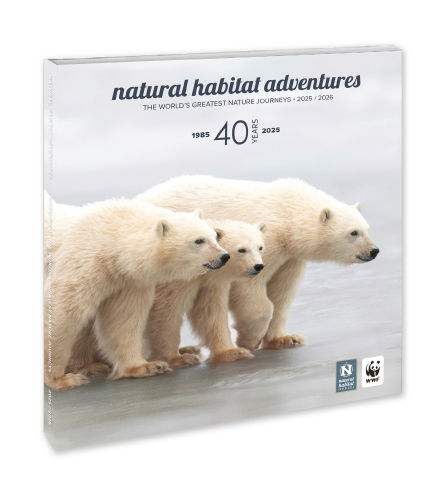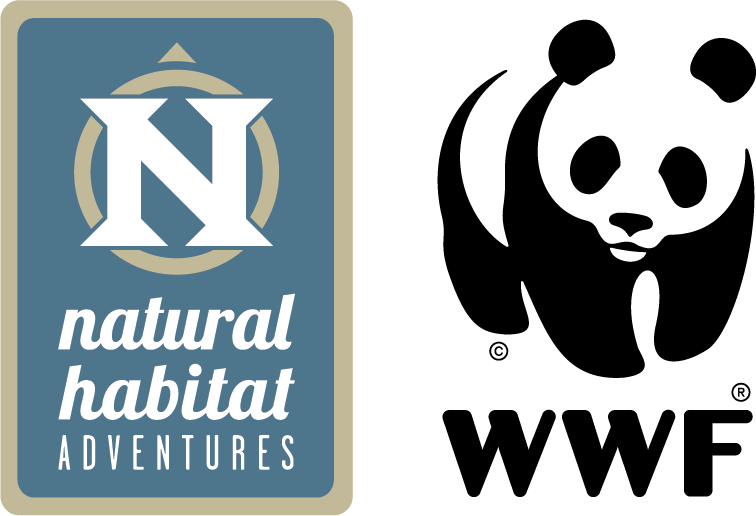Picture an expanse of wetlands so vast it’s five times larger than the Florida Everglades—an enormous freshwater floodplain pulsing with a near-constant cycle of inundation and retreat. This dynamic landscape is the Pantanal, home to some of South America’s largest and most charismatic species: giant otters, giant armadillos, giant anteaters, hyacinth macaws and the heaviest cat in the Americas—the jaguar. It is a haven of biodiversity and beauty, a vital artery of water and life.
Recently, we had the pleasure of speaking with Abby Martin, founder of the Jaguar Identification Project, about her team’s efforts to better understand and protect Brazil’s biggest cat. Over the years, this project has grown from a personal passion into a conservation tool embraced by the local community and by travelers who yearn to see these magnificent creatures thriving in their natural habitat.
A Place Like No Other
To fully appreciate the role of the Jaguar Identification Project, it helps to understand the Pantanal itself. Covering 42 million acres, this mosaic of swamps, forests, rivers and floodplains is renowned for holding the highest density of jaguars on Earth.
Yet the Pantanal isn’t just about big cats—it’s also a watery crucible of life that supports more than 650 bird species, alongside tapirs, capybaras, caimans and countless amphibians, reptiles and insects. Giant river otters—playful and social carnivores—cruise through channels hunting fish, while families of capybaras forage along the shores. Herds of grazing animals and an orchestra of bird calls color the soundscape at dawn. All of these creatures depend on the Pantanal’s seasonal flood pulse, a rhythmic rise and fall of water levels that triggers migrations, fruiting cycles and breeding seasons.
But that natural cycle is weakening. Increased deforestation in the surrounding Cerrado savanna and the Amazon Rainforest—ecosystems that feed moisture into the Pantanal’s waterways—has altered the timing and intensity of rains. As rainfall patterns become erratic, droughts intensify. These changes have led to larger, more frequent wildfires, devastating huge areas of this once-lush terrain. In some recent years, catastrophic fires have burned as much as 40% of the biome, dealing a severe blow to the Pantanal’s flora and fauna. Abby notes that fires—once part of the region’s natural rhythm—have grown so intense and frequent that recovery between burn cycles becomes more challenging. The Pantanal’s watery heart is under unprecedented strain.
Why Jaguars Flourish Here—and Face New Threats
The Pantanal has long been known as the world’s premier place to view wild jaguars. One reason is the region’s abundance of prey and its relatively open habitats. Each dry season, water recedes from the floodplains, concentrating wildlife along permanent rivers. Jaguars follow, drawn by the promise of easily accessible prey—such as capybaras and caimans—that congregate at the water’s edge. Over time, some jaguars in this area have grown surprisingly tolerant of human presence. This habituation means that visitors can often observe wild jaguars from boats at a respectful distance. It’s a remarkable wildlife experience, one of the few places on Earth where sightings of the Americas’ largest cat are almost guaranteed during the dry season.
Despite this, jaguars remain under threat. Across their range, the biggest risks they face are retaliatory killings by ranchers, habitat loss, and the escalating toll of climate-related pressures such as drought and fire. Estimates suggest 200–300 jaguars may be killed annually in the Pantanal due to rancher conflicts, significantly impacting local populations. Jaguars are also feeling the effects of relentless habitat conversion on the fringes of their wetland home—land cleared or burned for agriculture, cattle grazing and monocultures. The Pantanal’s delicate water system depends on surrounding ecosystems to maintain the floods and seasonal moisture that nurture biodiversity. When these outer ecosystems are stripped away, the Pantanal suffers—and so do the jaguars.
A Vision for Conservation: The Jaguar Identification Project
Abby Martin’s path to the Pantanal began as many great adventures do: with a single transformative trip. She first traveled to Brazil as a university student in a climate change course. After experiencing the Pantanal’s vibrant landscape and wildlife, Abby was hooked. She soon found her way back, this time as a volunteer jaguar researcher, and her involvement deepened.
In 2013, the Jaguar Identification Project (JIP) was born. Its aim was simple yet ambitious: monitor and identify individual jaguars along the rivers of the northern Pantanal by using their unique spot patterns. Each jaguar’s rosettes—those distinctive clusters of spots—are like fingerprints, allowing scientists and citizen scientists alike to distinguish one cat from another. Early on, Abby saw the potential for citizen science. If travelers and guides could learn to identify jaguars and report sightings, then the project could gather data beyond what any single research team could manage alone.
Initially, Abby faced a steep learning curve. Funding was scarce. She worked as a guide, driving boats of tourists along these jaguar-rich waterways, simultaneously collecting data, snapping photos and encouraging travelers to share their images. Over the years, JIP compiled a growing catalog of hundreds of jaguars, charting births, deaths, arrivals and departures. By 2016, the team published their first Jaguar ID book and began distributing it to lodges and local communities. Soon, visitors were flipping through pages, exclaiming, “I saw Madroza!”—a well-known female jaguar famed for her dramatic river-edge hunting skills, leaping down from logs to ambush caimans below.

Join expert naturalist guides on our trip Jaguars & Wildlife of Brazil’s Pantanal to discover South America’s largest wildlife sanctuary—the best place on the planet to spot jaguars in the wild! © Helder Brandão de Oliveira
Citizen Science & Tourism: A Powerful Synergy
JIP’s success hinges on the synergy between research and ecotourism. Every visitor armed with a camera is a potential data collector. When tourists share their photos, they contribute vital snapshots of jaguars that JIP staff might not see themselves. A cat thought to have vanished for years might turn up, revealing she’s still alive and raising cubs. A once-unknown individual can be identified and named.
This flood of citizen data allows researchers to assess changes in jaguar demographics and behavior over time. After the mega-fires of 2020 and subsequent years, Abby’s team detected a fascinating—and initially puzzling—trend. The number of jaguars identified along the rivers soared. At first glance, one might interpret this as a post-fire recovery or even a boon for jaguars. But a closer look reveals a different story.
The fires destroyed vast swaths of the Pantanal’s interior habitat. Jaguars, unable to find suitable shelter and prey in the scorched landscapes, moved toward the rivers—safe havens where water and life persisted. So the population spike at the rivers wasn’t a sign of overall recovery; it was a gathering of refugees seeking the last green corridors of habitat. Long-term data like this, made possible by citizen contributions, help scientists understand how jaguars respond to environmental changes, informing future conservation measures.
Unveiling Hidden Behaviors
With abundant data, JIP has uncovered remarkable jaguar behavior. They’ve documented coalitions of male jaguars—unrelated or distantly related individuals that team up for a competitive edge. They’ve also recorded the first confirmed case of jaguar infanticide, a behavior previously known in other big cats but never before confirmed for jaguars in the wild. These behavioral insights are not only fascinating; they also help predict how jaguars might adapt to climate pressures, shifts in prey availability and changes in habitat quality.
This is research that can have global implications. As climate change intensifies and extreme weather events become more common, understanding how top predators like jaguars respond can guide conservation strategies worldwide. Jaguars serve as umbrella species; safeguarding them helps protect countless other species and the entire ecosystem.
The Importance of Conservation Travel
While tourism provides critical benefits such as funding research and deterring poaching, it must be carefully managed to protect wildlife. Too many boats pursuing limited jaguar sightings can stress the animals and disrupt their hunts, causing them to retreat into dense vegetation. Without proper guidelines and enforcement, excessive tourism pressure can negatively affect both wildlife welfare and the quality of visitor experiences. Conservation travel, however, prioritizes sustainable practices and wildlife protection. In Brazil’s Pantanal, responsible tourism supports the preservation of extraordinary biodiversity, from jaguars and giant otters to vibrant birdlife. It also empowers local communities through sustainable economic opportunities, incentivizes habitat protection, and funds critical scientific research and environmental education. By traveling with Natural Habitat Adventures, guests participate in immersive, expertly guided experiences that place wildlife-friendly practices and meaningful community engagement at their core, directly contributing to the Pantanal’s long-term conservation.
Local Involvement & Long-Term Vision
The Jaguar Identification Project has also become a vehicle for community engagement. Abby and her colleagues have brought local guides, some of whom were once hunters or fishermen, into the fold. These community members now help set up and maintain camera traps deep in the park’s interior—work that’s physically demanding and logistically challenging. Their intimate knowledge of the landscape and its wildlife is invaluable, and their participation ensures that conservation efforts benefit those who live and work in the region.
For the future, Abby dreams of securing more resources, including the possibility of purchasing private lands to act as buffer zones and wildlife corridors. By protecting riverine forests that serve as vital ecological refuges, she hopes to preserve what makes the Pantanal so special—a place where jaguars still roam free and flourishing.
How to Help
JIP’s work shows how a single traveler’s photo or a small donation can contribute to a larger conservation mission. If you’re fortunate enough to visit the Pantanal, consider connecting with the project. Buy a Jaguar Field Guide, share your images and educate yourself about the importance of these forests and wetlands. Even from home, there are ways to help:
- Support Conservation Organizations: Reputable NGOs like Panthera and WWF are working to mitigate human-jaguar conflicts and preserve jaguar habitat.
- Spread the Word: Educate your friends and family about the importance of preserving the Pantanal and its wildlife.
- Conscious Travel: When booking a trip, choose responsible operators who prioritize wildlife welfare and follow best practices for sustainable tourism.
- Learn More: Watch the documentary Saving Jaguars and Ourselves, which the Jaguar Identification Project helped produce. It provides deeper insight into climate issues affecting the Pantanal and the steps we can take to safeguard it.
A Legacy Worth Preserving
Sitting in a boat at the meeting of the waters—where rivers converge amid lush gallery forests—one feels the pulse of the Pantanal’s “freshwater heart.” The jaguars that grace these shores have thrived here for millennia, each generation adapting to the changing flood cycles and shifting landscapes. In recent years, that world has been thrown off balance. Yet, as Abby Martin’s work and the dedication of countless citizen scientists show, it’s not too late to help.
The Jaguar Identification Project reminds us that knowledge is power. Each identification, each data point and each traveler’s shared photo deepens our understanding of jaguar life. Armed with that knowledge, we can push for stronger protections, more thoughtful tourism guidelines and better land-use policies. By working together—conservationists, travelers, local communities and the global public—we can ensure that the Pantanal’s jaguars continue to reign in their rightful place, inspiring wonder for generations to come.



























